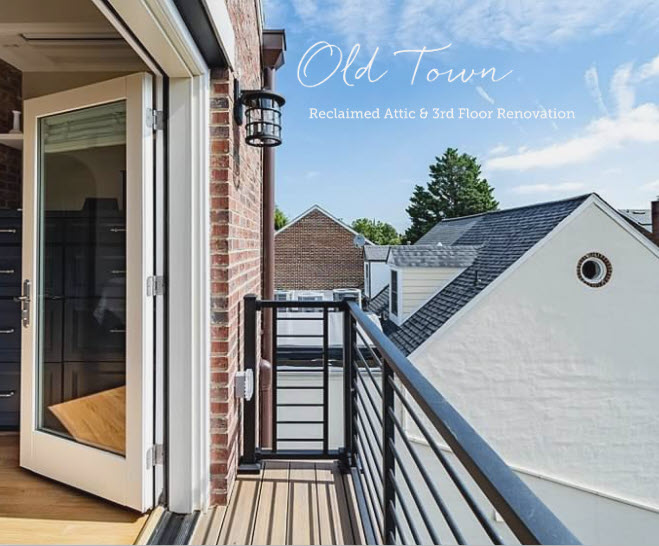With home prices at record highs, it’s only natural that more homeowners are spending money on remodeling. I’ve personally remodeled three homes and I never want to remodel again!
But for those of you who want to suffer through the pain of remodeling, whether to get a better deal or earn some sweat equity, here are some top down views I have about the process:
-
Pay more for quality material since labor cost is relatively fixed
-
Get the proper permits to protect yourself from bad workmanship, while also boosting the value of your home through. More comprehensive 3R report
-
Expect the overall job to cost 30% more and take 30% longer, but don’t let the contractor know
-
Adding livable space is the most valuable type of remodel
-
Always speak to the last contractor’s client at the very least
-
Great homes have wonderful outdoor space
-
The value of a remodel fades over a 20-30 year period, at which point a new remodel may be due
-
Decide whether you’re remodeling for profit or for personal use
The big question every homeowner has when it comes to remodeling is how much they should actually spend to increase their chances of not only getting their money back, but also making a positive return if you decide to sell.
I believe the #1 remodeling error is spending outside the scope of the home. Let’s discuss a framework.
Remodel Within The Scope Of Your Home
Decide whether your house is high-end, mid-end, or low-end. You can make the call based on the value of your house compared to the median home value in your city and neighborhood. If the value of your home is within +/- 25%, it should be considered mid-end. Once you’ve decided what level your house is, remodel based on that level.
There’s a wise saying, “don’t buy the most expensive home on the block.” Instead, buy the cheapest home on the block with the most amount of expansion potential. After all, if the price per square foot to build is cheaper than the current selling price per square foot, you’ve got yourself an easy arbitrage. For example, in San Francisco, you can build for less than $500/sqft and sell for $1,000/sqft in many neighborhoods for a nice 100% gain.
Homeowners tend to overspend on remodeling because they think, “While we’re at it, why don’t we do this too.” This kind of thinking makes the project cost way more than the original plan. Contractors can influence homeowners to do more as well. “The wall is open, might as well install a Tesla charger while we’re at it,” said my contractor once. No thanks.
Remodeling Price Guide
Rank the importance of each room and assign a remodeling maximum cost based on a percentage of the building’s value. You will get the most return from a medium-end remodel job that appeals to the largest amount of people. Don’t get too eclectic in your tastes.
A lot of people throw out remodeling costs like “$10,000 for a small bathroom remodel,” or “$50,000 for a kitchen.” These figures are meaningless if you haven’t also considered the realistic value of your house. Instead, you must think about your remodeling costs as a percentage cost of your entire house.
For example, let’s say you want to update your kitchen. You can either rip everything out and replace the floors, tiles, countertops, and appliances or you can do all that plus follow your contractor’s suggestion and expand another 100 square feet into the yard “while you’re at it.” How much should you spend?
Let’s say you bought the house for $1,000,000. It has three bedrooms, two bathrooms, 1,800 square feet of living space, and a 5,000 square foot lot. A property’s value is made up of land value and building value. In your case, the split is 50/50. If you include the kitchen, living room, and laundry room, the house has a total of eight rooms. The value of each room is therefore around $62,500 ($500,000 building value divided by 8 rooms). You can consider $62,500 as the max you would ever spend doing anything to a room.
But of course, not all rooms are considered equal. Even though a master bedroom is very valuable, it’s not as expensive to construct as your typical kitchen due to the lack of plumbing, complicated electrical wiring, and installation of appliances. Further, not all rooms are the same size as well. Therefore, you’ve got to therefore make a judgement call on the value of each room based on its size, amenities, and importance to you.
I’ve ranked the following rooms in descending order of value:
-
Kitchen
-
Master bathroom
-
Guest bathroom(s)
-
Master bedroom
-
Living room
-
Dining room
-
Guest bedrooms
-
Deck (outdoor space less valuable than indoor space)
You may have a different opinion. It’s very easy to build a bedroom, living room, or a dining room. All you need is to frame the room, thread in the electrical, put up sheetrock, mud and sand the sheetrock, paint the sheetrock, put up crown moldings if you wish, install lighting and switches, replace the floors and you are done.
Now I assign the value of each room as a percentage of the value of the building value of the house (not the entire house, although you can if you stay consistent). I’ll use $500,00 in this example.
-
Kitchen: 5% = $25,000 with a range of 3% – 10%
-
Master bathroom: 4% = $20,000 with a range of 2% – 5%
-
Guest bathroom(s): 2% = $10,000 with a range of 1% – 3%
-
Master bedroom: 1% = $5,000 with a range of 1% – 2%
-
Living room: 1% = $5,000 with a range of 1% – 2%
-
Dining room: 1% = $5,000 with a range of 1% – 2%
-
Guest bedrooms: 1% = $5,000 with a range of 1% – 2%
-
Deck: 1% = $5,000 with a range of 1% – 3% due to size
Realistically, most people are just going to focus on remodeling their kitchen and bathrooms. For bedrooms, family rooms, and dining rooms, the most you’ll do is paint, add crown molding or wainscoting, upgrade the windows, and redo light fixtures. Sometimes you might move a wall.
You can always spend more or less if you like. It’s a personal choice. Just remember to think in percentages and make sure your remodeling quality is in-line with the value of your home.


